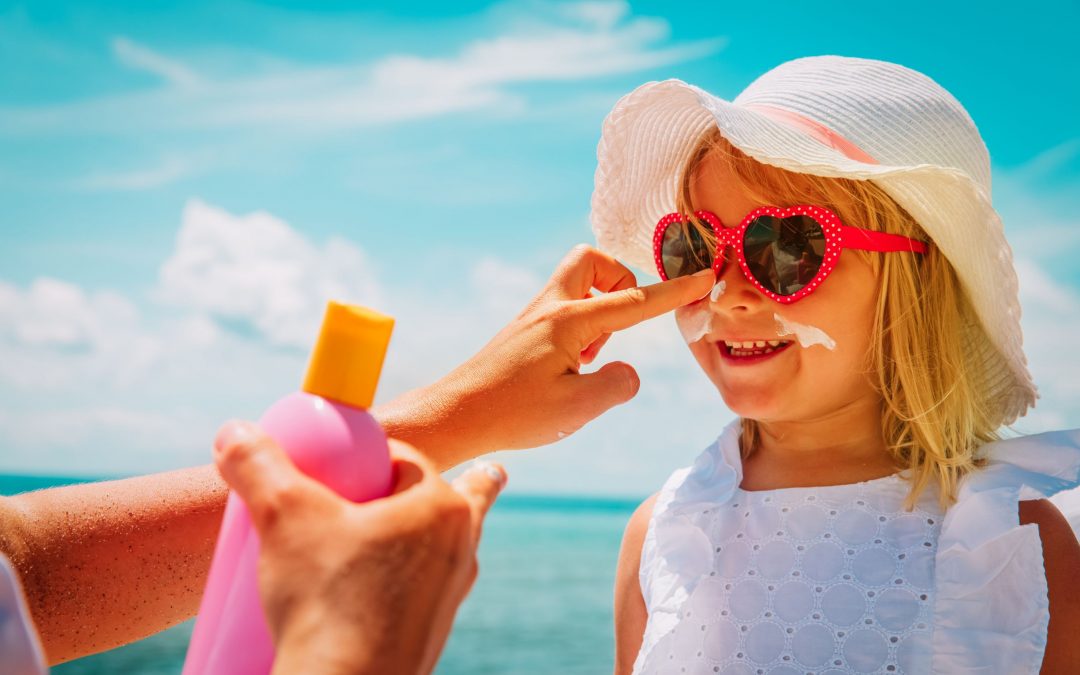Older Adult Skin Traits
The most common trait with the older adult skin is that it is always dry. As we age, the skin begins to thin and less capable of retaining moisture. Thin skin is more easily torn, and less bacteria get in. Additionally, as the skin ages it produces less oily secretions, which help keep the skin soft and supple.
Treating Older Adult Skin
Always keep the skin clean and avoid hot baths or too frequent showering/bathing. This will dry the skin out further. Warm water is the most effective, and bathing every other day is probably best. Keeping dry skin hydrated is the best way to avoid potential problems like cracking, pain, and itchiness. After showering or bathing, lather all over with a thick hydrating cream. This will help seal in the body’s natural moisture, and make the skin be more comfortable.
Who needs to use sunscreen?
Everyone!
What are UVA and UVB rays?
Sunlight consists of two types of harmful rays: ultraviolet A (UVA) rays and ultraviolet B (UVB) rays. UVA rays (which pass through window glass) penetrate deeper into the dermis, the thickest layer of the skin. UVA rays can cause suppression of the immune system, which interferes with the immune system’s ability to protect you against the development and spread of skin cancer. UVA exposure is also known to lead to signs of premature aging of the skin such as wrinkling and age spots.
The UVB rays are the sun’s burning rays (which are blocked by window glass) and are the primary cause of sunburn. A good way to remember it is that UVA rays are aging rays and UVB rays are burning rays.
When should sunscreen be used?
Sunscreen should be applied every day to exposed skin, and not just if you are going to be in the sun. UVB rays cannot penetrate glass windows, but UVA rays can, leaving you prone to these damaging effects if unprotected.
Don’t reserve use of sunscreen only for sunny days. Even on a cloudy day, up to 80 percent of the sun’s ultraviolet rays can pass through the clouds. In addition, sand reflects 25 percent of the sun’s rays and snow reflects 80 percent of the sun’s rays.
How much sunscreen should be used, and how often should it be applied?
Sunscreens should be applied to dry skin 15-30 minutes BEFORE going outdoors. When using sunscreen, be sure to apply it to all exposed areas and pay particular attention to the face, ears, hands, and arms. Coat the skin liberally and rub it in thoroughly, most people apply only 25 to 50 percent of the recommended amount of sunscreen.
One ounce, enough to fill a shot glass, is considered the amount needed to cover the exposed areas of the body properly. Don’t forget that lips get sunburned too, so apply a lip balm that contains sunscreen with an SPF of 30 or higher.
Sunscreens should be reapplied approximately every 2 hours or after swimming or perspiring heavily. Even so called “water-resistant” sunscreens may lose their effectiveness after 40 minutes of being in the water. Sunscreens rub off as well as wash off so if you’ve towel-dried, re-apply sunscreen for continued protection.
What type of sunscreen should I use, and what ingredients should I look for?
Sunscreens are available in many forms, including ointments, creams, gels, lotions, sprays, and wax sticks. The type of sunscreen you choose is a matter of personal choice. Ideally, sunscreens should be water-resistant, so they cannot be easily removed by sweating or swimming, have an SPF of 30 or higher and provide broad-spectrum coverage against both UVA and UVB light.
What is an SPF?
SPF stands for sun protection factor. Sunscreens are rated or classified by the strength of their SPF. The SPF numbers on the packaging can range from as low as 2 to greater than 50. These numbers refer to the product’s ability to deflect the sun’s burning rays (UVB).
Is sunscreen application all I need to do to protect myself from the sun?
Sun exposure is the most preventable risk factor for skin cancer, including melanoma. You can have fun in the sun and decrease your risk of skin cancer. Here’s how to be sun smart:
- Generously apply a broad-spectrum, water-resistant sunscreen with a sun protection factor (SPF) of at least 30 to all exposed skin
- Wear protective clothing, such as a long-sleeved shirt, pants, a wide brimmed hat, and sunglasses when possible
- Seek shade when appropriate
- Use caution near water, snow, and sand because they reflect the damaging rays of the sun, which can increase your chance of sunburn
- Get vitamin D safely through a healthy diet that may include supplements. Don’t seek the sun
- Avoid tanning beds
- Check your birthday suit on your birthday
Is there a safe way to tan?
There is no safe way to tan. Tanning damages the skin. Tanning occurs when ultraviolet rays penetrate the epidermis (the skins outer layer), causing the production of melanin in response to the injury.
Chronic exposure to ultraviolet light, both natural and artificial, results in change in the skin’s texture, causing wrinkling and age spots. Thus, tanning to improve appearance is ultimately self-defeating.
Every time you tan, damage occurs to your skin and this damage accumulates over time. The accumulated damage, in addition to accelerating the aging process, also increases your risk for all types of skin cancer.

